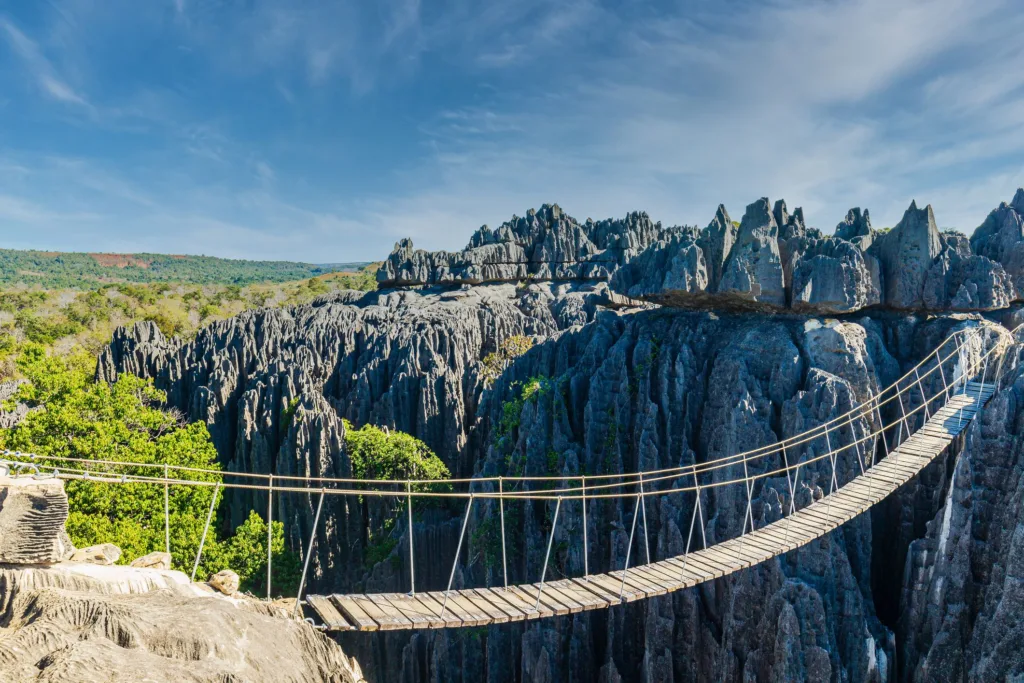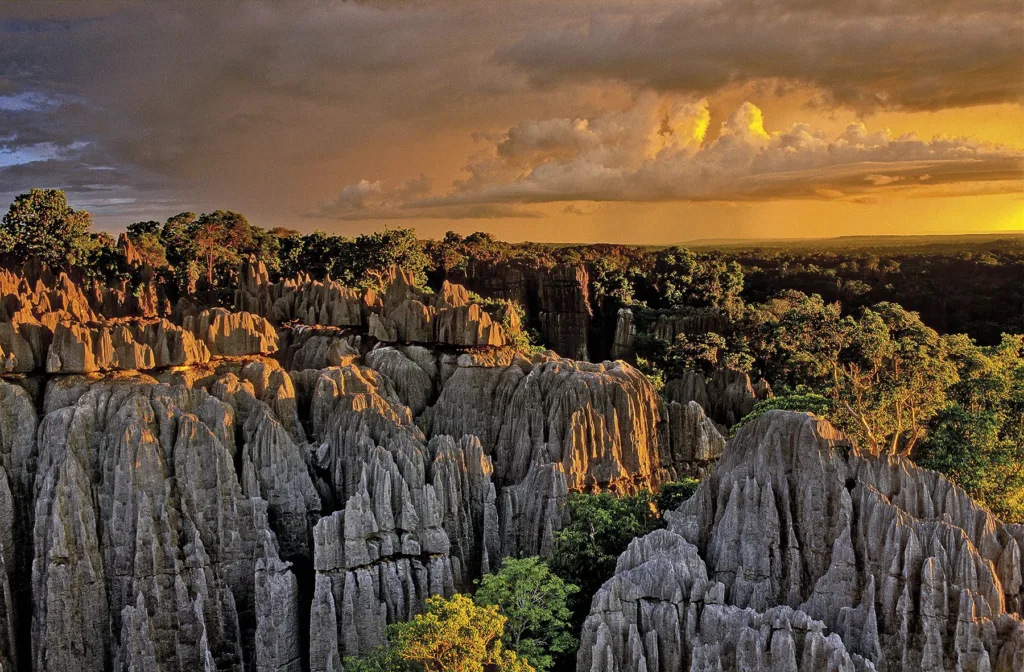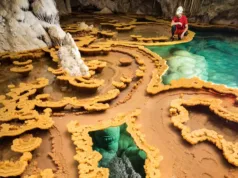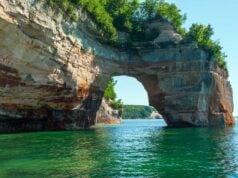Tsingy de Bemaraha National Park is a unique and breathtaking natural wonder located in the western part of Madagascar. Covering an area of approximately 1,520 square kilometers (590 square miles), it was designated as a UNESCO World Heritage Site in 1990 due to its exceptional geological formations and rich biodiversity.



The name “Tsingy” originates from the Malagasy word meaning “walking on tiptoes.” This name perfectly describes the jagged limestone formations found throughout the park. These formations were created over millions of years through the process of erosion, resulting in a maze of sharp limestone pinnacles, deep canyons, and razor-sharp ridges.
The Tsingy de Bemaraha National Park consists of two major areas: the Great Tsingy and the Little Tsingy. The Great Tsingy is the larger and more accessible section, featuring towering limestone peaks reaching up to 50 meters (165 feet) high. It offers adventurous hiking trails and suspension bridges that allow visitors to explore its impressive landscapes. The Little Tsingy, as the name suggests, is a smaller area but equally stunning, with narrow canyons and limestone needles.
One of the most remarkable features of Tsingy de Bemaraha National Park is its unique ecosystem. The park is home to a wide variety of plant and animal species, many of which are endemic to Madagascar. The limestone formations provide habitats for several rare and endangered species, including several species of lemurs, reptiles, and birds. The park also has a network of underground rivers, caves, and sinkholes, adding to its ecological diversity.
Exploring Tsingy de Bemaraha National Park requires a sense of adventure and a certain level of physical fitness. Visitors can embark on guided hikes, which include climbing ladders, crossing rope bridges, and navigating narrow passages. These activities offer an adrenaline-filled experience while allowing visitors to marvel at the park’s stunning geological formations and discover its hidden gems.
Due to its remote location and challenging terrain, visiting Tsingy de Bemaraha National Park requires planning and coordination. It is advisable to hire a local guide who is familiar with the area and can ensure your safety during the exploration. Additionally, the park has limited infrastructure and accommodations, so it is essential to make arrangements in advance.
In conclusion, Tsingy de Bemaraha National Park is a geological masterpiece and an ecological treasure. Its unique limestone formations and diverse wildlife make it a must-visit destination for nature enthusiasts and adventurers seeking a one-of-a-kind experience in Madagascar.
Geology and Formation of Tsingy
The geology and formation of Tsingy de Bemaraha National Park are fascinating and are the result of millions of years of geological processes. The park’s distinctive limestone formations were shaped by a combination of erosion, water, and tectonic activity.
The foundation of Tsingy de Bemaraha National Park is composed of a layer of limestone that was deposited during the Jurassic Period, approximately 200 million years ago when Madagascar was part of the supercontinent Gondwana. This limestone layer was formed from the accumulation of the remains of marine organisms such as corals, shells, and microorganisms.
Over time, geological uplift and tectonic movements caused the limestone layer to rise, creating a plateau. The uplift was accompanied by the formation of cracks and fractures in the limestone due to stress and pressure. These cracks provided pathways for water to flow, leading to the development of an extensive underground network of rivers and caves.
The main geological process responsible for the unique formations in Tsingy de Bemaraha is karstification. Karstification occurs when water, rich in carbon dioxide, seeps through the cracks in the limestone and dissolves the rock over time. As the water dissolves the limestone, it creates underground channels, caves, and sinkholes.
The dissolution of the limestone also leads to the creation of the sharp pinnacles and ridges known as tsingy. As the water dissolves the limestone, the harder parts of the rock, such as the fossilized remains of marine organisms, are left behind, forming a durable layer called a hardpan. The softer parts of the limestone erode away, leaving behind the jagged, needle-like formations that give the park its distinctive appearance.
Erosion played a crucial role in shaping the Tsingy de Bemaraha landscape. Rainfall and surface water flowed through the cracks and crevices, carving out canyons and deepening gorges over time. Wind and chemical weathering also contributed to the shaping of the limestone formations, gradually wearing away the exposed surfaces.
The formation of Tsingy de Bemaraha National Park is an ongoing process. The erosive forces of water and wind continue to shape and modify the landscape, albeit at a slow pace. This dynamic geological environment has created a unique and stunning natural spectacle, making Tsingy de Bemaraha a remarkable and internationally recognized site.
Exploration and Tourism in Tsingy de Bemaraha National Park
Exploring Tsingy de Bemaraha National Park offers visitors a chance to witness the park’s remarkable geological formations and discover its diverse wildlife. However, due to its remote location and challenging terrain, visiting the park requires careful planning and coordination.
When visiting Tsingy de Bemaraha, it is highly recommended to hire a local guide who is knowledgeable about the area. The guides are familiar with the park’s trails and can ensure your safety during the exploration. They can also provide valuable insights into the park’s geology, flora, and fauna, enhancing your overall experience.
The park offers several hiking trails that allow visitors to navigate through the limestone formations and explore its hidden gems. The trails vary in difficulty, ranging from easy walks to more strenuous hikes that involve climbing ladders and crossing suspension bridges. These activities provide a sense of adventure and allow visitors to appreciate the park’s unique beauty up close.
One of the main attractions in Tsingy de Bemaraha National Park is the Grand Tsingy, the larger and more accessible section of the park. It offers well-marked trails and viewing platforms that provide panoramic views of the limestone pinnacles. Visitors can embark on guided hikes that take them through narrow canyons, over precarious bridges, and to stunning viewpoints.
For those seeking a more adventurous experience, the Little Tsingy offers a wilder and more challenging terrain. The trails in this area are narrower, and navigating through the sharp limestone needles requires agility and care. The Little Tsingy offers a more secluded and immersive experience, with the opportunity to discover hidden caves and crevices.
It’s important to note that exploring Tsingy de Bemaraha National Park requires a certain level of physical fitness and agility. Visitors should be prepared for hiking on uneven and steep terrain, climbing ladders, and crossing narrow bridges. Wearing sturdy and comfortable footwear is essential for traversing the sharp limestone formations safely.
Accommodations within the park are limited, and most visitors stay in nearby towns such as Bekopaka. These towns offer basic guesthouses and camping facilities. It is advisable to make arrangements in advance and check for the availability of accommodations and services.
As with any natural area, it is crucial to practice responsible tourism when visiting Tsingy de Bemaraha National Park. Visitors should follow the park’s regulations, stay on designated trails, and avoid touching or damaging the delicate limestone formations. It is also important to respect the wildlife and their habitats by observing from a distance and refraining from disturbing or feeding the animals.
In conclusion, Tsingy de Bemaraha National Park offers a unique and unforgettable experience for nature enthusiasts and adventure seekers. The park’s stunning geological formations, diverse wildlife, and challenging trails make it a remarkable destination worth exploring with the proper planning and guidance.
FAQ
How do I get to Tsingy de Bemaraha National Park?
Tsingy de Bemaraha National Park is located in western Madagascar. To reach the park, you can fly into Antananarivo, the capital city of Madagascar, and then take a domestic flight or travel by road to the town of Morondava. From Morondava, you can arrange transportation, such as a 4×4 vehicle, to reach the park.
Do I need a guide to visit Tsingy de Bemaraha National Park?
It is highly recommended to hire a local guide when visiting Tsingy de Bemaraha National Park. The guides are familiar with the park’s trails, geology, and wildlife. They ensure your safety and enhance your experience by providing valuable insights and information.
What is the best time to visit Tsingy de Bemaraha National Park?
The best time to visit Tsingy de Bemaraha National Park is during the dry season, which typically runs from April to November. During this period, the weather is generally drier, making it easier to navigate the trails and explore the park’s limestone formations. However, it’s always a good idea to check the weather conditions before your trip.
Are there accommodations available inside the park?
There are limited accommodations inside Tsingy de Bemaraha National Park. Most visitors stay in nearby towns such as Bekopaka, where you can find basic guesthouses and camping facilities. It is advisable to make reservations in advance to ensure availability.
What should I pack for a visit to Tsingy de Bemaraha National Park?
When visiting the park, it is recommended to pack sturdy and comfortable footwear for hiking on uneven terrain. Additionally, pack lightweight and breathable clothing suitable for the tropical climate, insect repellent, sunscreen, a hat, and a reusable water bottle. Don’t forget your camera to capture the stunning landscapes!
Are there any age restrictions for visiting Tsingy de Bemaraha National Park?
There are no specific age restrictions for visiting the park. However, it’s important to consider the physical demands of the activities involved, such as hiking and climbing ladders. Visitors should assess their own fitness levels and capabilities, especially for more challenging trails.
Is it possible to see wildlife in Tsingy de Bemaraha National Park?
Yes, Tsingy de Bemaraha National Park is home to a diverse array of wildlife, including several species of lemurs, reptiles, and birds. Hiring a guide increases your chances of spotting wildlife and learning about the different species that inhabit the park.
Are there any safety precautions I should take while visiting Tsingy de Bemaraha National Park?
While visiting the park, it’s important to follow the guidance of your guide and stay on designated trails. The limestone formations can be sharp and treacherous, so it’s crucial to be cautious and avoid touching or damaging them. Additionally, be aware of your surroundings, carry necessary supplies, and stay hydrated during your hikes.
How long should I plan to spend in Tsingy de Bemaraha National Park?
The duration of your visit depends on your interests and the activities you wish to undertake. A minimum of two to three days is recommended to explore the park and experience its main attractions. However, if you want to delve deeper into the park’s wilderness and undertake more extensive hikes, you may need additional time.




































